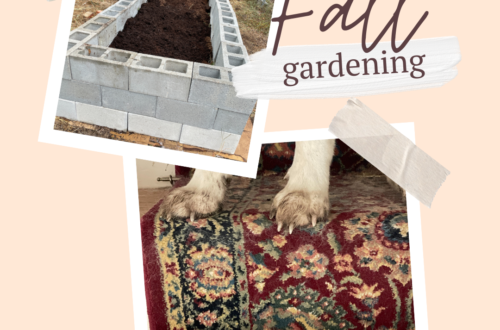Gardening in Texas
Hey there, fellow Texans! Spring is here, it’s almost summer, and there’s no better time to get your hands dirty and start a garden. Whether you’re a newbie or looking to refresh your skills, this guide will help you navigate the joys and challenges of spring gardening in the Lone Star State. Let’s dive in!
Getting Started: Know Your Zone
First things first, Texas is HUGE, and the climate can vary a lot from one region to another. Check out the USDA Plant Hardiness Zone Map to find out your specific zone. This will help you choose plants that are most likely to thrive in your area.
Soil: The Foundation of Your Garden
Good soil is key to a successful garden. Here’s what you need to do:
– Test Your Soil: Grab a soil test kit from your local garden center. It’ll tell you what nutrients your soil needs.
– Amend as Needed: Add compost, manure, or other organic matter to improve soil structure and fertility.
Our main gardens are in raised beds, so we have skipped that whole soil testing. We had a local company bring good soil to us. That was a help the first year. Fast forward to now and every year we have to amend the soil. The plants take the nutrients out of the soil so you have to put new nutrients back into the soil for them.
Ever wonder why I have bunnies?
Bunny droppings are one of the few fertilizers from animals that you don’t have to compost, or wait, to add to you garden. I have a healthy supply that I mix right into the soil before I plant.
Composting is an excellent way to amend the soil as well. Recycle those kitchen scraps!
Picking the Right Plants
When it comes to spring gardening in Texas, choose plants that can handle the heat and occasional dry spells. Here are some great options:
– Veggies: Tomatoes, peppers, cucumbers, and squash are all stars in a Texas garden.
– Herbs: Basil, rosemary, and mint are super easy and perfect for adding fresh flavors to your meals.
– Flowers: Marigolds, zinnias, and sunflowers not only look great but also attract pollinators.
And did you know that there are so many varieties of these plants? If you only shop at your local nursery or home store you are missing so much! Check out those seed catalogs, so many wonderful different varieties. You will be amazed! Just be sure you are shopping and buying for your zone.
Watering Wisely
Texas weather can be unpredictable. One day it’s raining, the next it’s blazing hot. Here are some watering tips:
– Morning Routine: Water your garden in the early morning. This helps reduce evaporation and gives plants a chance to soak up moisture before the heat kicks in.
– Deep Watering: Water deeply and less frequently. This encourages roots to grow deeper and makes your plants more drought-resistant.
– Mulch Magic: Add a layer of mulch around your plants. It helps retain moisture, keeps the soil cool, and prevents weeds.
Watering is a struggle most Texans deal with. Planting native plants is a way to deal with this, but even they need watering. Most Texans dread that water bill every month, but we do what we can with what we have.
My biggest tip with deep watering and even hand watering is to make sure you turn the water off. I can’t tell you how many times I have turned those soaker hoses on and then got distracted. I have a hair band on the spigot now. When I turn the water on I put it on my wrist. That way I am reminded the hose is still on!
Dealing with Pests
Texas gardens can attract all kinds of critters. Here’s how to keep them at bay:
– Companion Planting: Plant marigolds or basil alongside your veggies to repel pests naturally.
– Hand-Picking: For larger pests like caterpillars, sometimes the best method is simply picking them off your plants.
– Natural Sprays: Use neem oil or insecticidal soap to tackle smaller pests.
Now, bigger pests are my issue. Sorry, I have no help with squirrels. I have tried everything that I can find, and still, the squirrels get more of my tomatoes than I do.
Keep It Going: Maintenance Tips
A little regular maintenance goes a long way:
– Weeding: Pull weeds regularly to prevent them from stealing nutrients and water from your plants.
– Pruning: Trim back overgrown plants to encourage healthy growth and better airflow.
Gardening is a daily thing. You need to be out there all the time. If you let it get away from you, it takes a lot of work to get it back to where it was.
Enjoy the Fruits of Your Labor
The best part of gardening is enjoying the harvest. Whether it’s fresh veggies, fragrant herbs, or colorful blooms, take some time to appreciate what you’ve grown. Share your bounty with friends and family or try out some new recipes.
Learn to can or dehydrate. Or be extra special like me and get a freeze dryer!
Conclusion
Spring gardening in Texas can be incredibly rewarding, even if you’re just starting out. With a little planning, some dirt under your nails, and a lot of love, you can create a thriving garden that brings joy all season long. So, grab your gloves and get growing, y’all!
Happy gardening!




